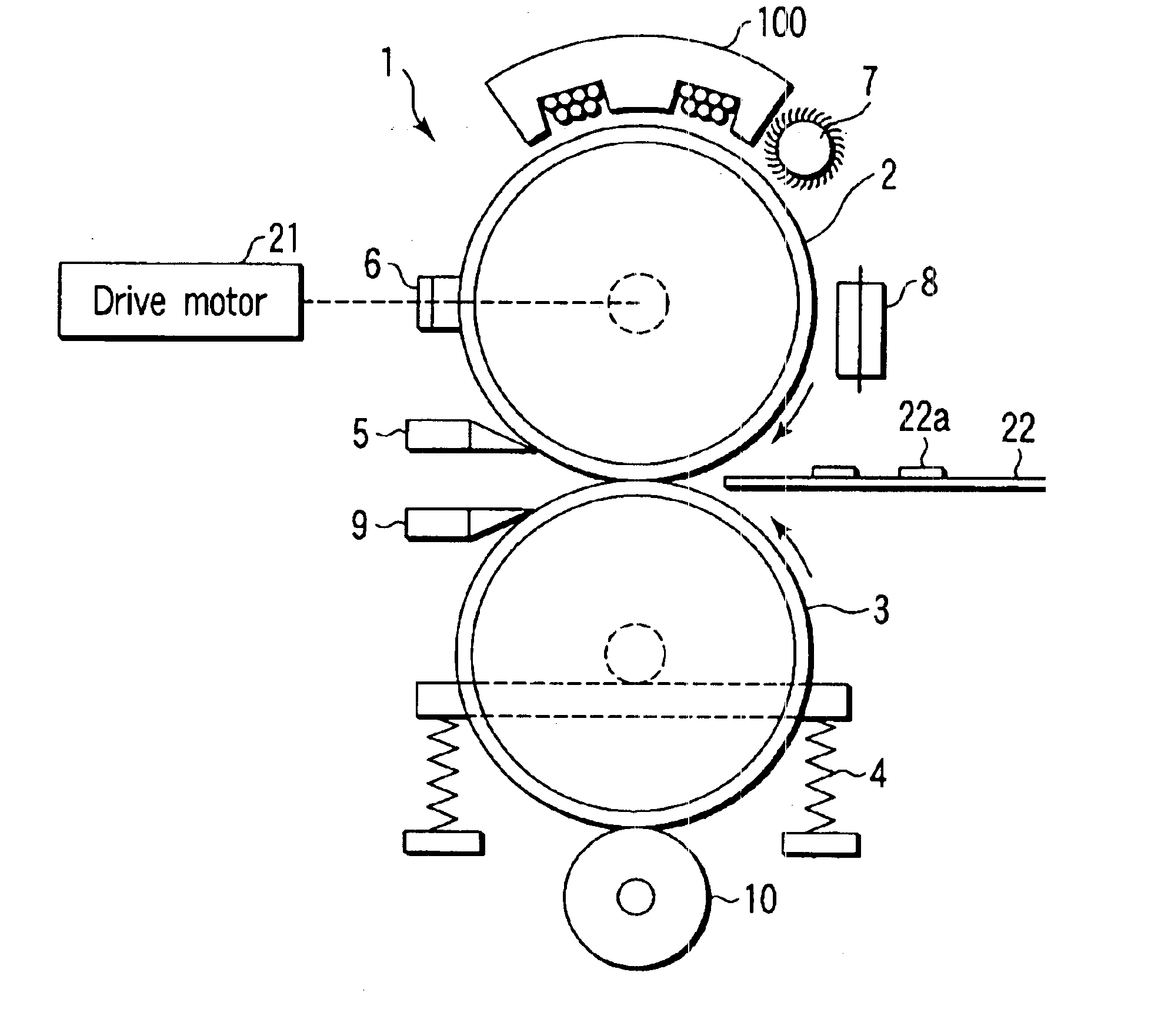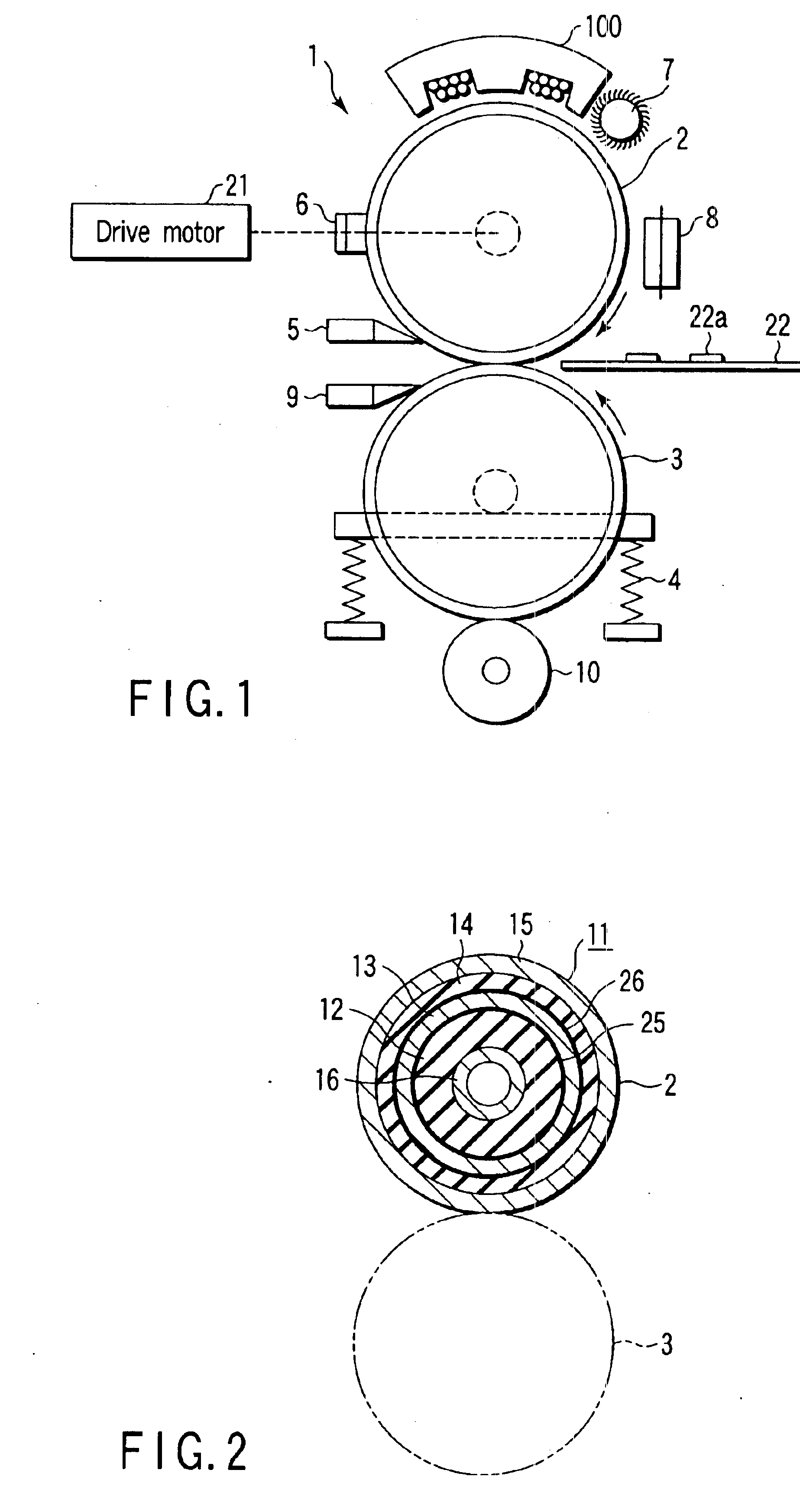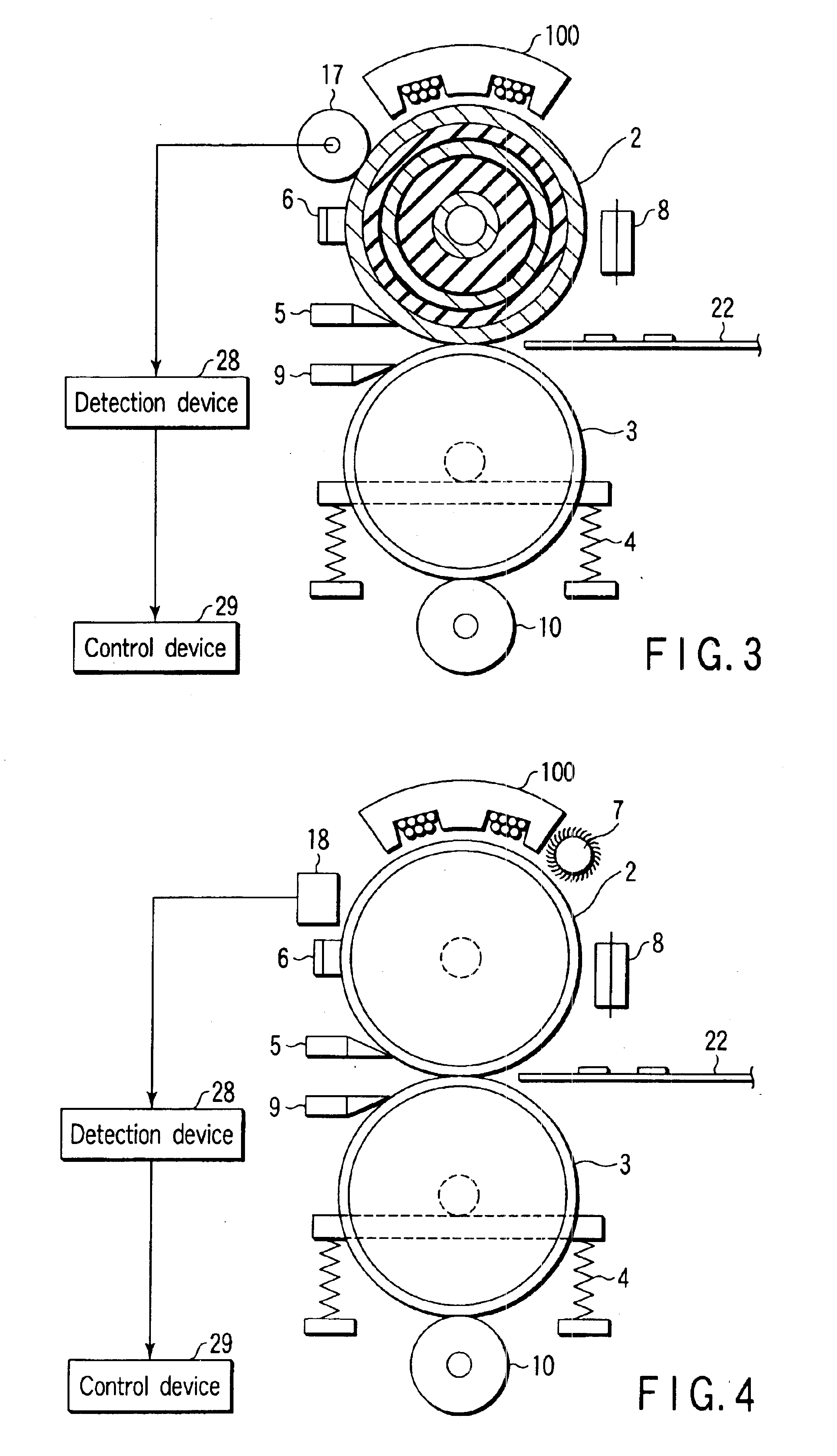Fixing apparatus
a technology of fixing apparatus and fixing rod, which is applied in the direction of electrographic process apparatus, shaft and bearing, instruments, etc., can solve the problems of not considering the following problems, and achieve the effect of effective utilization
- Summary
- Abstract
- Description
- Claims
- Application Information
AI Technical Summary
Benefits of technology
Problems solved by technology
Method used
Image
Examples
first embodiment
[0033]FIG. 1 is a schematic view diagrammatically showing a whole of a fixing apparatus 1 according to the present invention.
[0034]The fixing apparatus 1 is provided in an image forming apparatus and is configured to have a heating (heat) roller 2 (diameter 40 mm) formed as a heating rotation body and a pressing (press) roller 3 (diameter 40 mm) formed as a pressure applying rotation body. As the heating roller 2 use is made of an endless member 11 as shown in FIG. 2. A detailed structure of the endless member 11 will be described below.
[0035]The pressing roller 3 is formed with a rubber such as silicone, fluorine, etc., covered on a peripheral surface of its core member. The pressing roller 3 is pressed by a pressure application mechanism 4 against the heating roller 2 and maintained to have a predetermined nip width.
[0036]The heating roller 2 is driven by a drive motor 21 in the direction of an arrow and the pressing roller 3 is rotated as a driven roller in a direction of an arro...
second embodiment
[0068]The peripheral speed D of the heating roller 2 is detected by the same method as that of the Details of it are omitted. In the image forming apparatus used in this invention, a slip detection routine is provided for detecting a slip between the rotationally driven heating roller 2 and the pressing roller 2.
[0069]FIG. 9 is a flowchart showing the slip detection routine.
[0070]In this self-diagnostic routine, first, the peripheral speed C of the pressing roller 3 is found from the relation between the rotation speed (angular velocity) by a drive force loaded on the pressing roller 3 and the radius of the roller 3 (step ST11). Then, the peripheral speed D of the heating roller 2 is detected by a detecting means (step ST12).
[0071]In order to decide a large / small relation between these values C and D the difference C−D is found (step ST13).
[0072]The peripheral speeds C and D become equal when there is no slip between the rollers 2 and 3 and becomes C>D when there occurs a slip betw...
fifth embodiment
[0083]FIG. 11 is a schematic view showing a fixing apparatus according to the present invention.
[0084]It seems that the endless member 11 is softer and readily deformable and that, during a prolonged period, it is more liable to be deformed and to be so due to a thermal expansion at the time of heating than expected.
[0085]Thus it is also considered that, in the structure of the first embodiment, the separation claw 5 on the heating roller 2 side is moved away from the surface of the roller 2 due to the deformation of the roller 2 and it is more forcibly urged against the roller then expected and does not function as expected.
[0086]In the fifth embodiment, therefore, a separation blade 20 is retained by an adjusting blade 20 and positioning rollers 19, 19 are mounted on both ends to allow these rollers to abut against the surface of the heating roller 2 by means of an urging mechanism not shown. By doing so, as shown in FIG. 12, a given distance is always retained between the heating...
PUM
 Login to View More
Login to View More Abstract
Description
Claims
Application Information
 Login to View More
Login to View More - R&D
- Intellectual Property
- Life Sciences
- Materials
- Tech Scout
- Unparalleled Data Quality
- Higher Quality Content
- 60% Fewer Hallucinations
Browse by: Latest US Patents, China's latest patents, Technical Efficacy Thesaurus, Application Domain, Technology Topic, Popular Technical Reports.
© 2025 PatSnap. All rights reserved.Legal|Privacy policy|Modern Slavery Act Transparency Statement|Sitemap|About US| Contact US: help@patsnap.com



